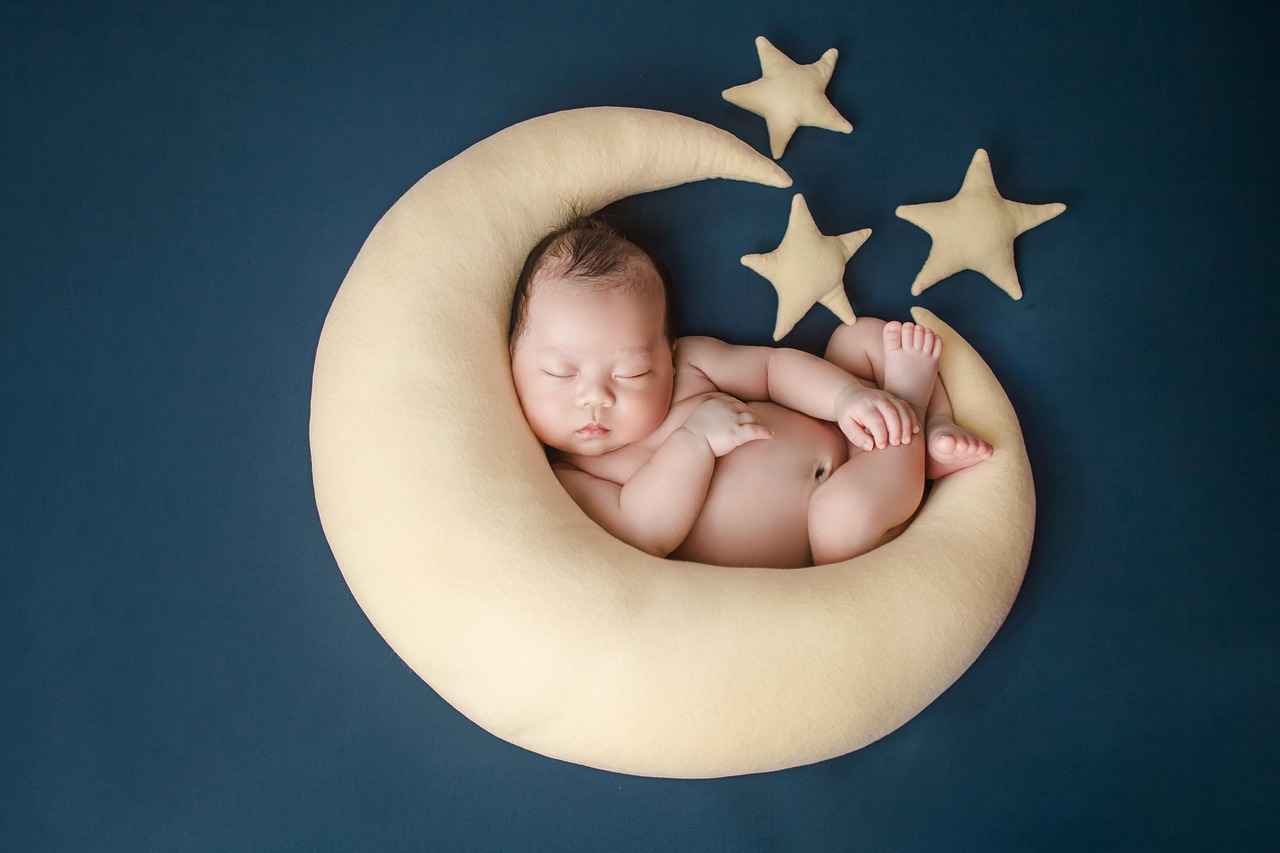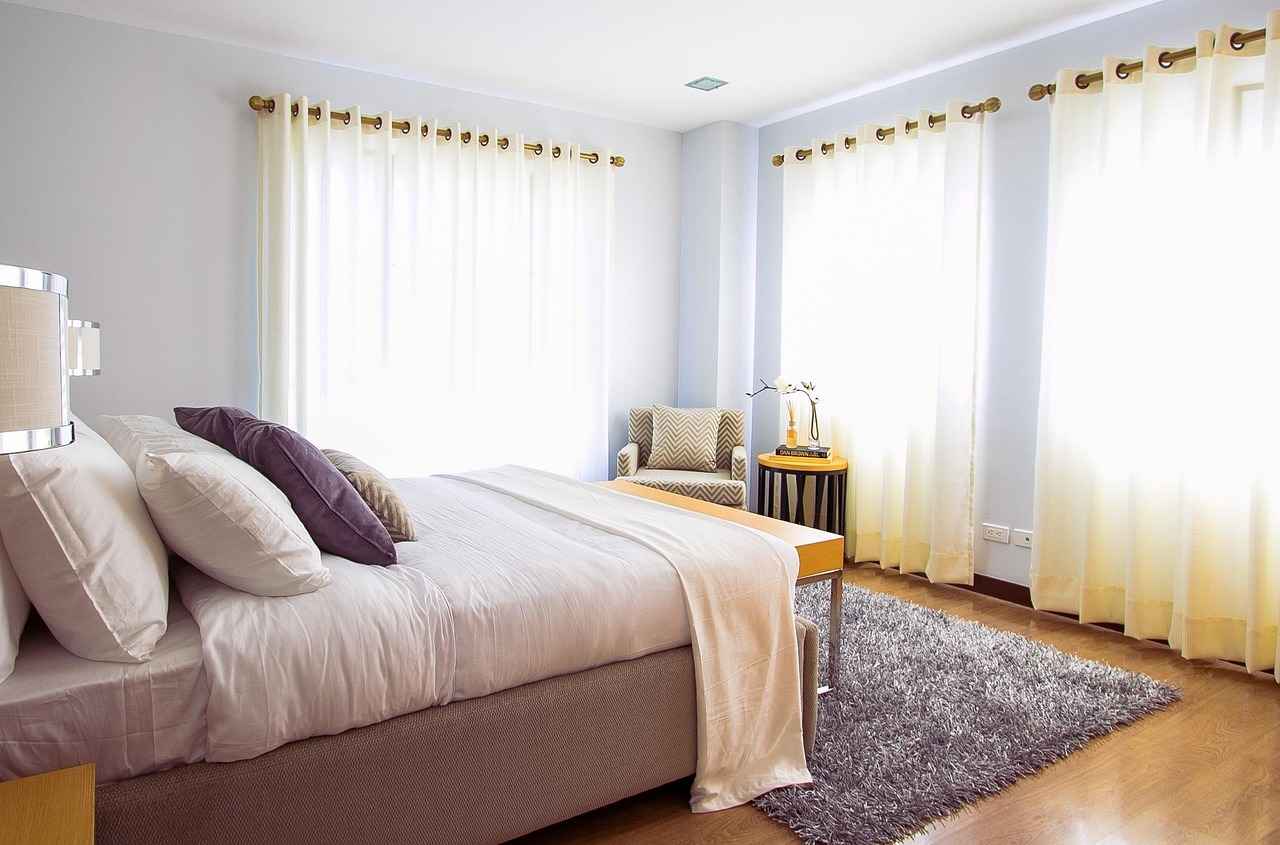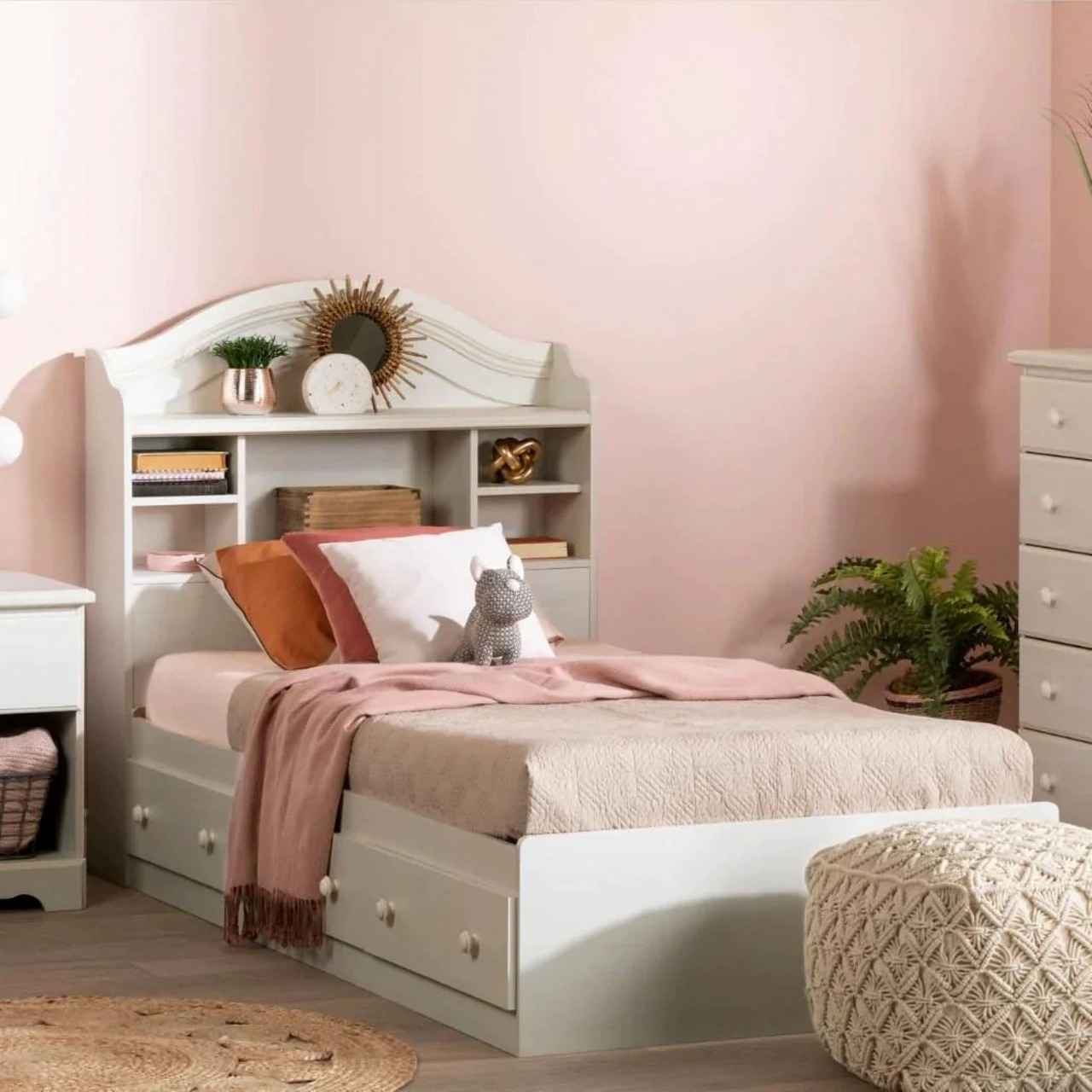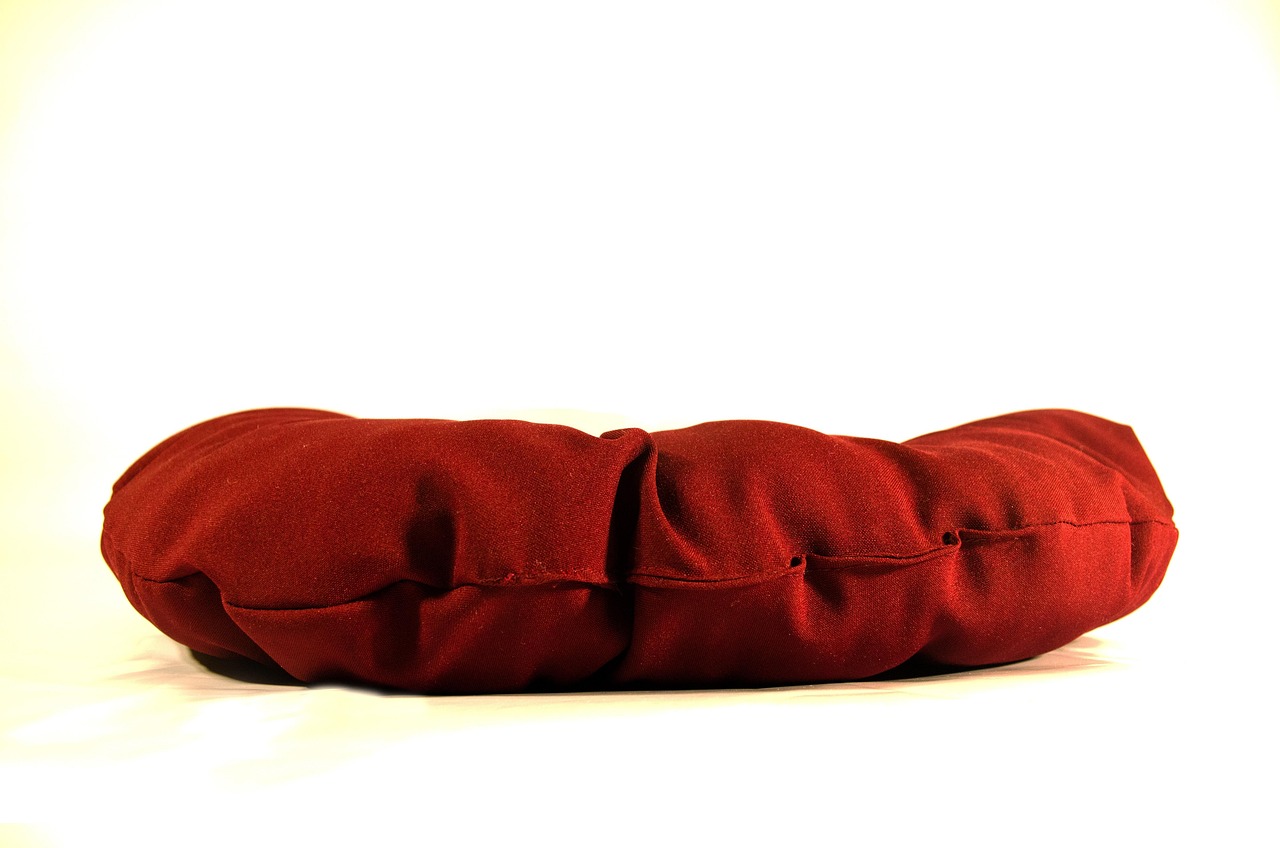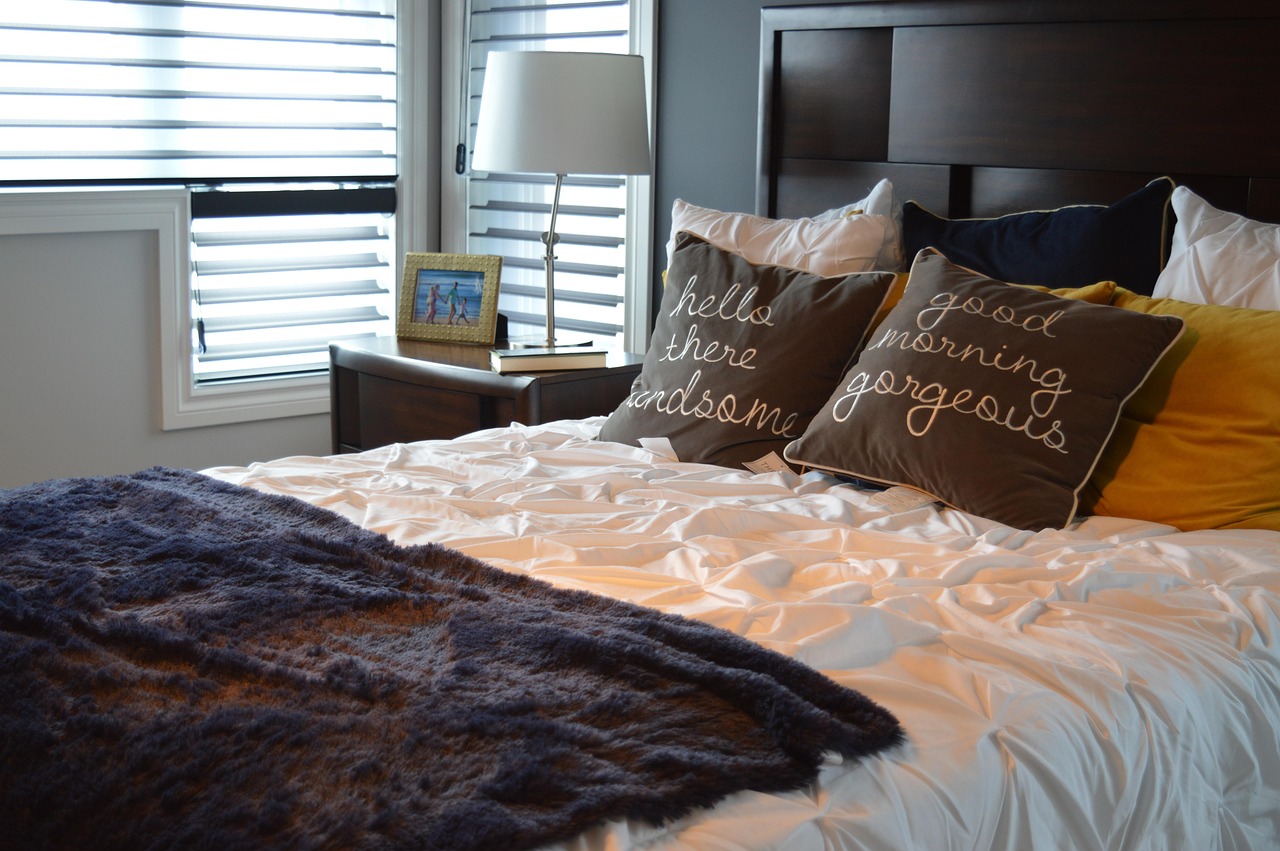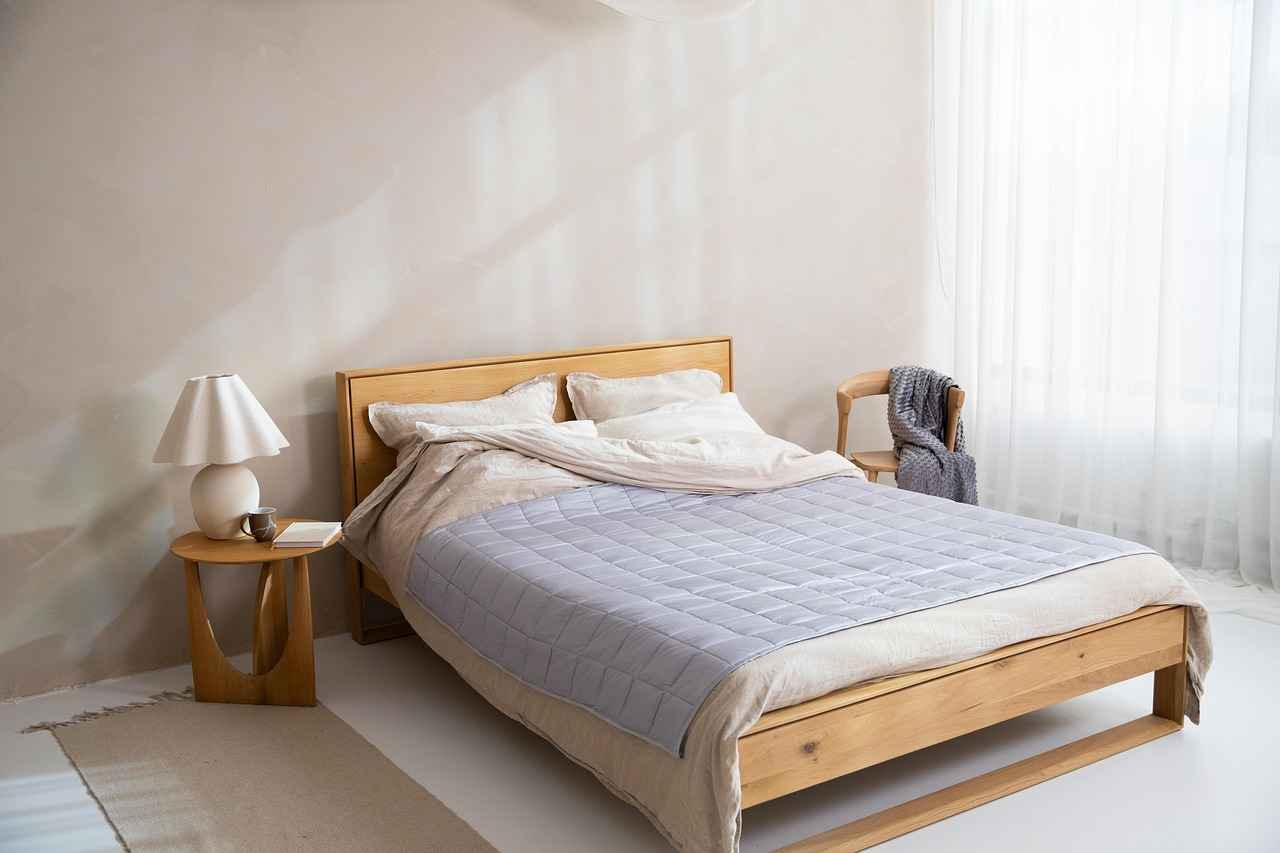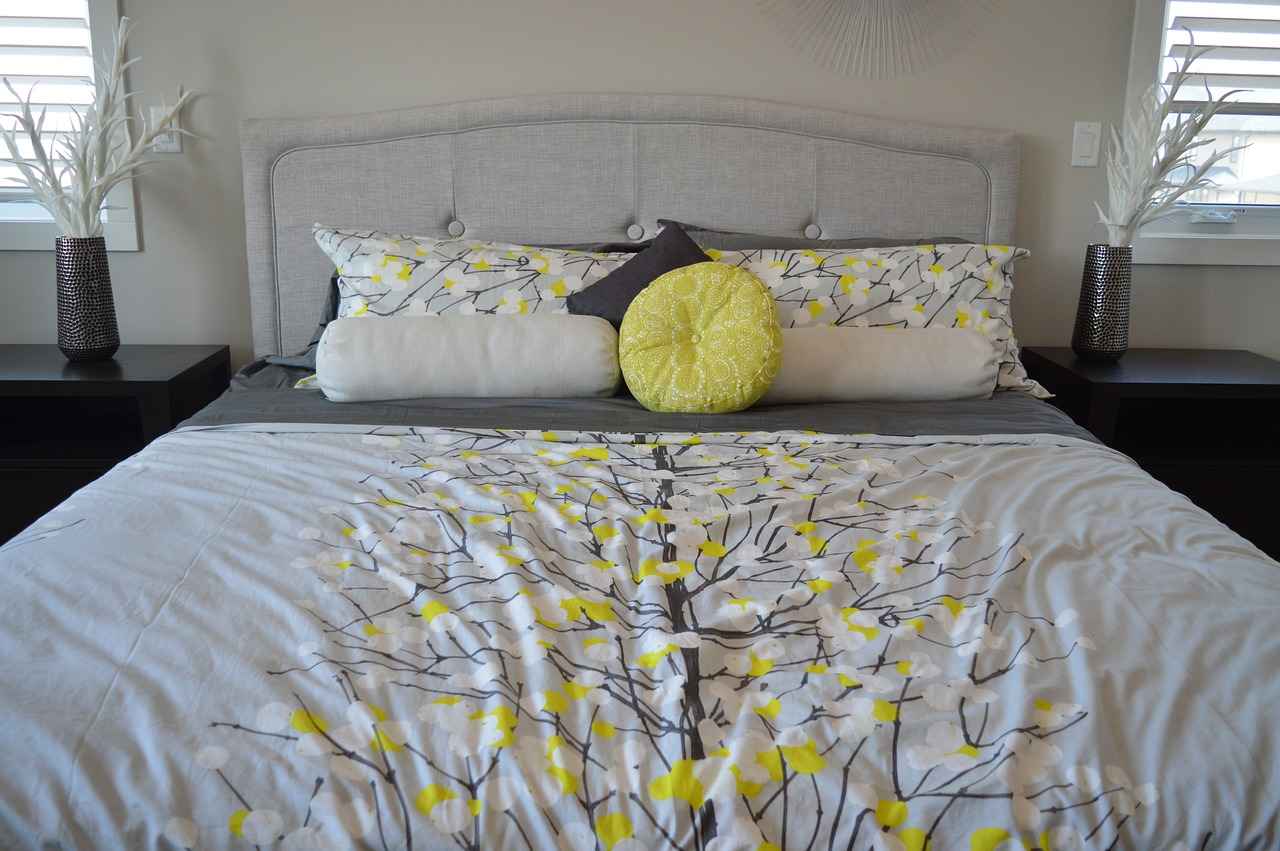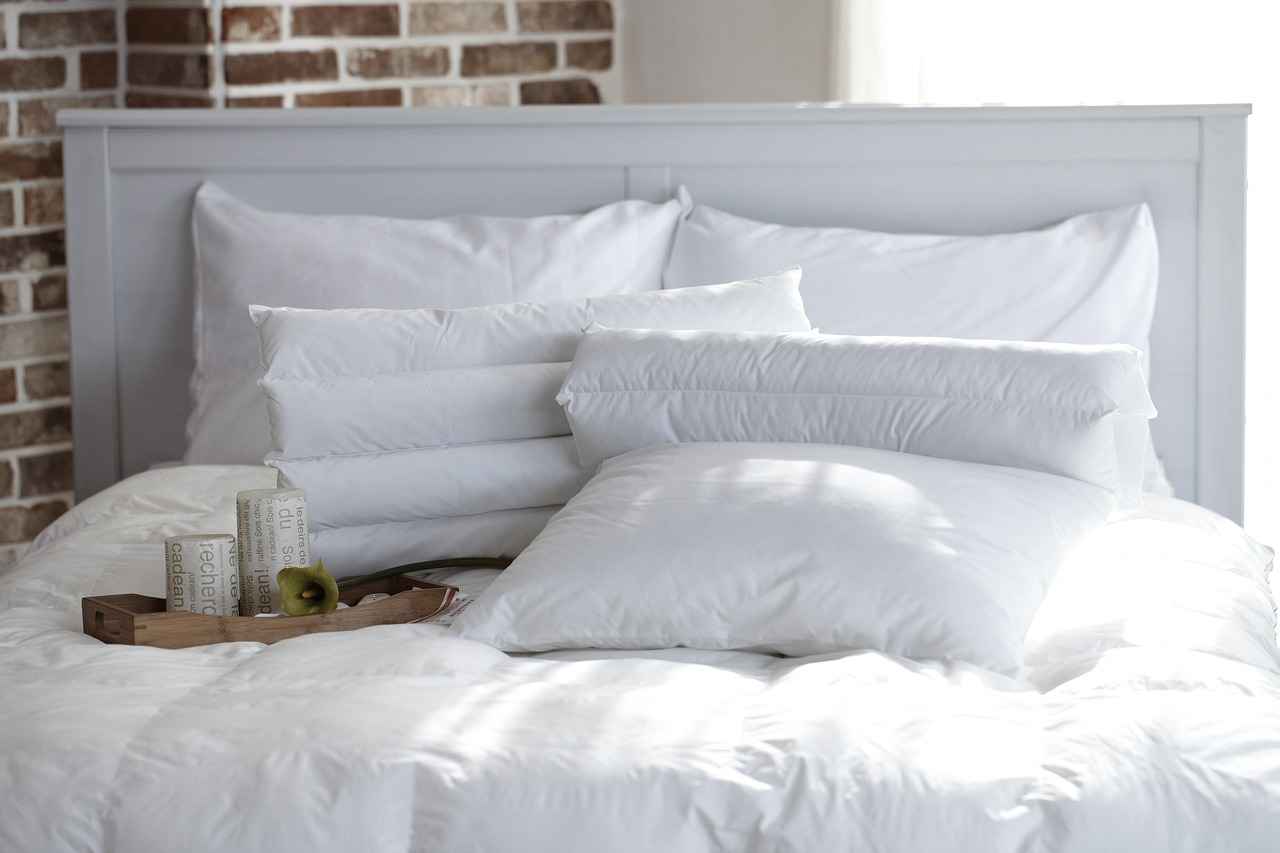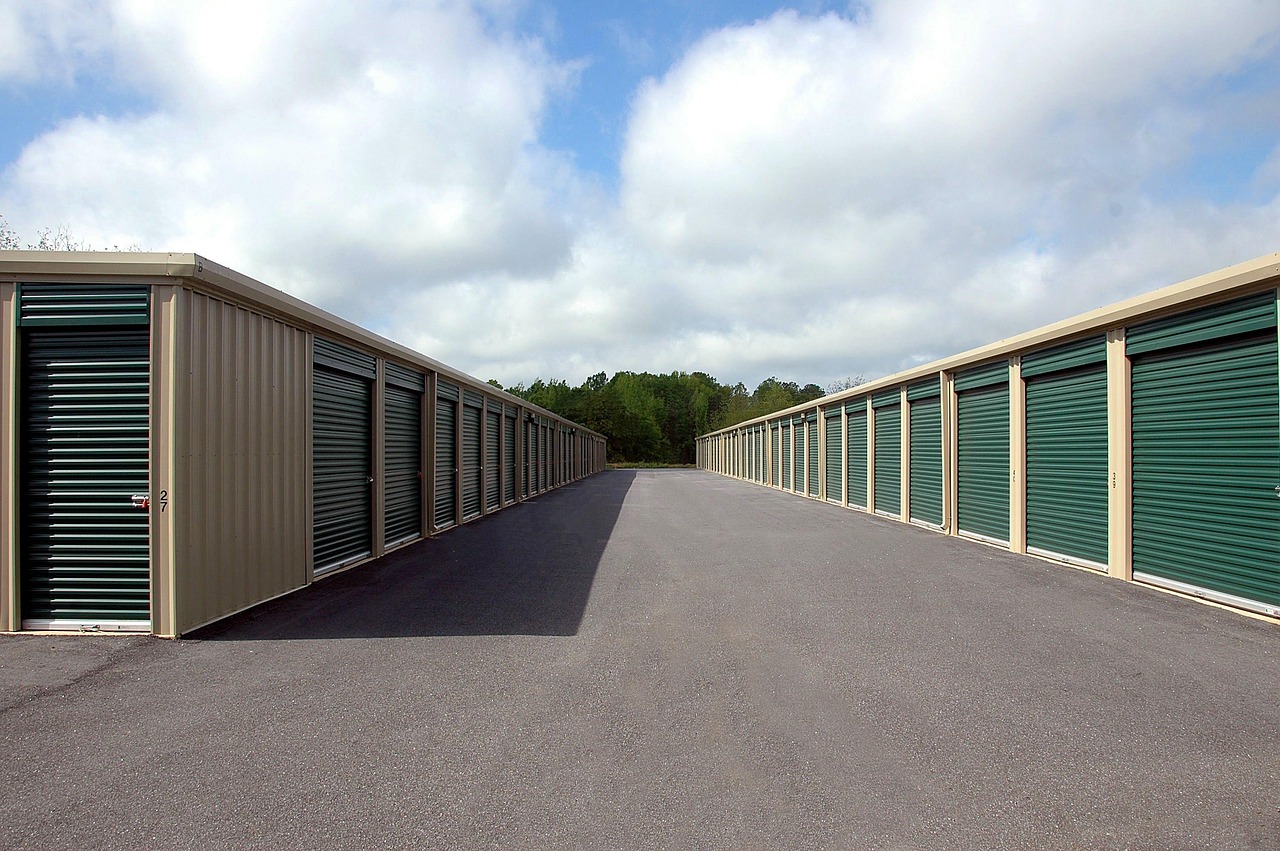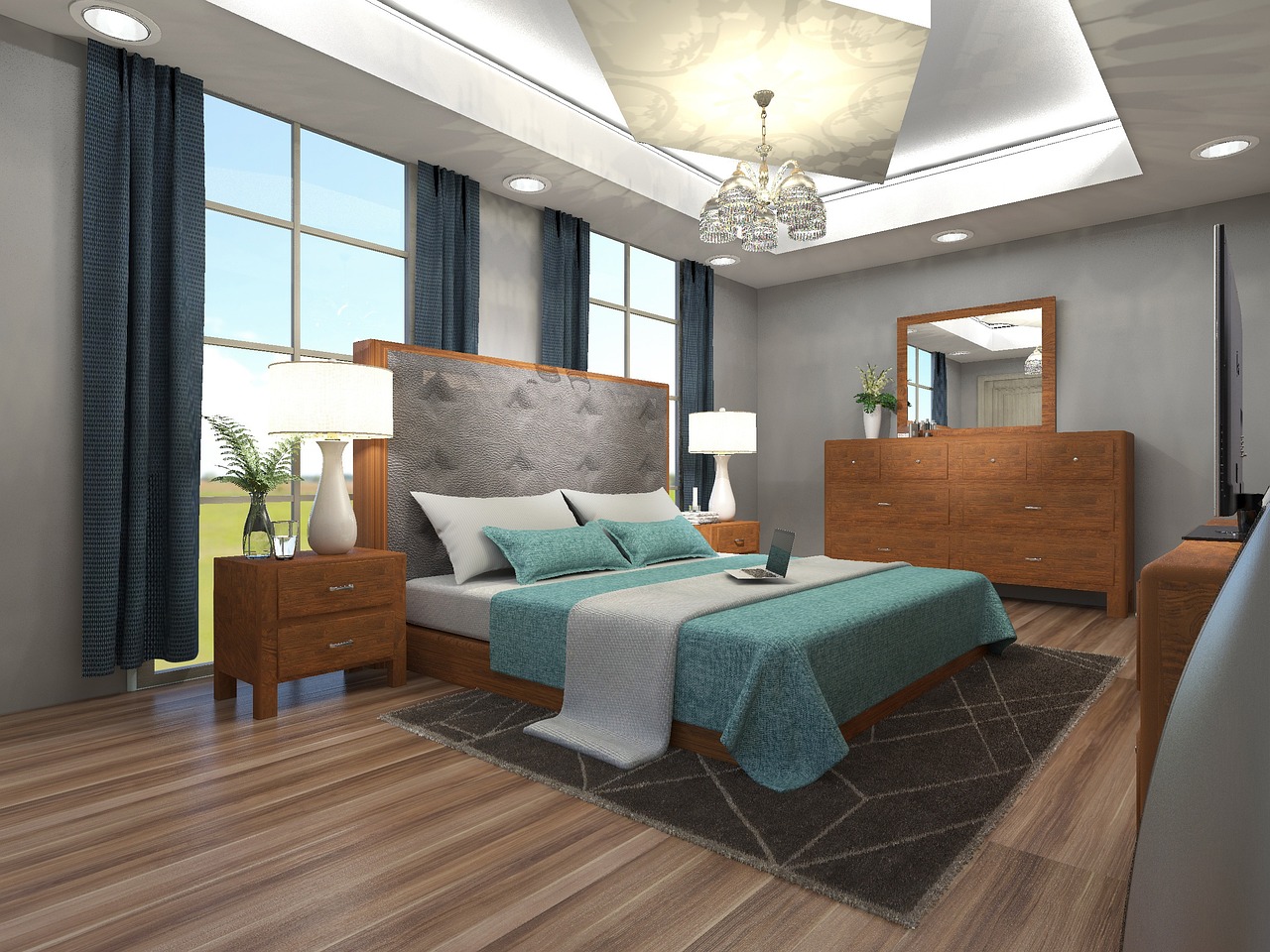This article explores charming baby bed designs that create a cozy and inviting nursery environment. Discover various styles, materials, and tips to ensure comfort and safety for your little one.
Understanding the different styles of baby beds is crucial for creating a cozy nursery. From cribs to bassinets, each style has unique features that cater to both aesthetics and functionality. Traditional cribs often evoke a classic feel, while modern designs can offer sleek lines and contemporary finishes.
Modern cribs come in various designs that blend functionality with style. Explore popular options, including convertible cribs, minimalist designs, and those with added storage solutions. Each design serves a purpose while enhancing the overall look of your nursery.
Convertible cribs are designed to grow with your child, transforming from a crib to a toddler bed. This versatility makes them a wise investment for parents. Not only do they save money in the long run, but they also adapt to your child’s changing needs.
When selecting a convertible crib, safety features are paramount. Look for cribs that meet safety standards set by organizations such as the Consumer Product Safety Commission (CPSC). Ensure the crib has adjustable mattress heights and secure locking mechanisms.
Convertible cribs come in various styles and finishes. Here, we highlight design aesthetics that can complement your nursery decor while being functional. Natural wood finishes and soft pastels are popular choices that blend seamlessly into any nursery theme.
Minimalist crib designs focus on simplicity and elegance. These designs often feature clean lines and neutral colors, allowing them to enhance your nursery’s overall aesthetic while ensuring comfort for your baby. A minimalist crib can create a serene environment that promotes relaxation.
A quality mattress is essential for your baby’s sleep quality. Selecting the right mattress involves understanding the types available and how they contribute to your baby’s comfort and safety.
Understanding the different types of baby mattresses, such as foam, innerspring, and organic options, is crucial for making an informed choice. Foam mattresses are lightweight and easy to handle, while innerspring mattresses offer support and durability.
Ensuring your baby’s mattress is safe and well-maintained is vital for their health. Regularly check for any signs of wear and tear, and clean the mattress according to the manufacturer’s instructions. Using a waterproof cover can also help maintain hygiene.
Color and patterns play a significant role in nursery design. This section discusses how to incorporate playful colors and patterns into your baby’s bed design for a cozy atmosphere.
Soothing colors can promote relaxation and sleep in babies. Colors like soft blues and gentle greens are known for their calming effects. Consider these hues when choosing bedding and decor to create a peaceful environment.
Patterns can stimulate a baby’s visual senses. Incorporate fun patterns into bedding and decor while maintaining a cohesive design. Patterns featuring animals, stars, or geometric shapes can add a playful touch to your nursery.
Sustainability is increasingly important in nursery design. This section explores eco-friendly baby bed options, including materials and manufacturing processes that prioritize the environment.
Understanding the materials used in eco-friendly baby beds is essential. Look for options made from reclaimed wood or non-toxic finishes to ensure a safe sleeping environment for your baby.
Choosing eco-friendly designs not only benefits the environment but also promotes a healthier living space for your baby. These beds are often made from sustainable materials that reduce your carbon footprint and provide peace of mind for parents.
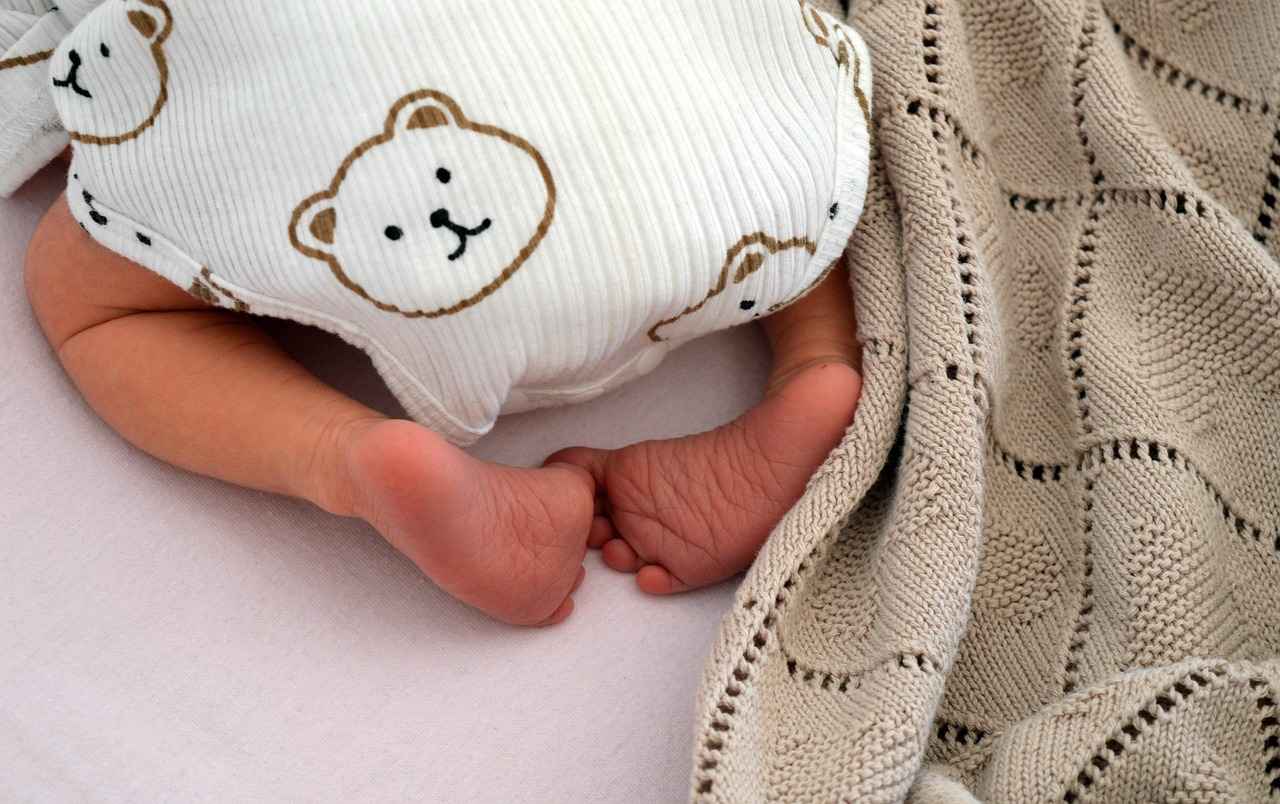
Choosing the Right Baby Bed Style
When it comes to creating a cozy nursery for your little one, is essential. The baby bed serves not only as a sleeping space but also as a focal point in the nursery’s design. Understanding the various options available can help you make an informed decision that balances both aesthetics and functionality.
There are several popular styles of baby beds, each with its unique features. Here, we will explore some of the most common types:
- Cribs: Traditional cribs are a staple in most nurseries. They offer a safe and secure sleeping environment for infants. Many modern cribs come with adjustable mattress heights and can be converted into toddler beds, making them a long-term investment.
- Bassinets: Ideal for newborns, bassinets are smaller and more portable than cribs. They provide a cozy sleeping area and can be easily moved around the house, allowing parents to keep their baby close during the early months.
- Co-Sleepers: These beds attach to the side of the parents’ bed, promoting bonding while ensuring the baby has their own safe space. Co-sleepers are designed for easy access during nighttime feedings.
- Portable Cribs: Also known as travel cribs, these lightweight options are perfect for families on the go. They can be set up quickly and are often foldable, making them convenient for travel.
- Daybeds: A versatile option, daybeds can function as a crib during the day and a toddler bed at night. They often come with a trundle for additional sleeping space.
When selecting a baby bed, consider the space available in your nursery. Measure the room to ensure that the bed fits comfortably without overcrowding the area. Additionally, think about the style and color that will complement your nursery decor. A cohesive design can create a soothing environment conducive to sleep.
Another critical factor is the material used in the baby bed’s construction. Look for options made from non-toxic materials that meet safety standards. Solid wood beds are often preferred for their durability, while some parents opt for cribs made from sustainable materials to promote an eco-friendly nursery.
Finally, it’s essential to consider your personal lifestyle and preferences. For instance, if you plan to move frequently, a portable crib may be the best choice. Conversely, if you desire a more permanent setup, a traditional crib or a convertible option might be more suitable.
In summary, understanding the different styles of baby beds is crucial for creating a cozy nursery. Each style has its unique features that cater to both aesthetics and functionality. By carefully considering your options, you can select the perfect bed that meets your baby’s needs while enhancing the overall design of your nursery.

Popular Crib Designs for Modern Nurseries
When it comes to creating a cozy nursery, the choice of crib is pivotal. Modern cribs are not just functional; they also serve as a centerpiece that reflects your style and enhances the overall decor of the room. With a variety of designs available, parents can find cribs that align perfectly with their aesthetic preferences while ensuring safety and comfort for their little ones. Below, we explore some of the most popular crib designs that are trending in modern nurseries.
- Convertible Cribs: These versatile cribs are designed to adapt as your child grows. Starting as a crib, they can convert into a toddler bed, daybed, or even a full-size bed. This longevity makes them a smart investment for parents. Many convertible cribs come with adjustable mattress heights, allowing you to customize the crib to your baby’s needs.
- Minimalist Designs: For parents who appreciate simplicity, minimalist cribs offer a sleek and modern aesthetic. These cribs typically feature clean lines and neutral colors, making them a beautiful addition to any nursery. Their unobtrusive design allows for easy integration with various decor styles, ensuring a serene atmosphere for your baby.
- Cribs with Storage Solutions: Space can be a constraint in many nurseries, making cribs with built-in storage a practical choice. These cribs often include drawers or shelves beneath the mattress, providing a convenient place to store baby essentials like diapers, blankets, and toys. This added functionality helps keep the nursery organized and clutter-free.
- Eco-Friendly Cribs: As sustainability becomes increasingly important, eco-friendly cribs are gaining popularity. Made from sustainable materials, these cribs not only prioritize your baby’s safety but also contribute to a healthier planet. Look for cribs that are certified free from harmful chemicals and are constructed from responsibly sourced wood.
- Stylish Cribs with Unique Features: Some modern cribs come with unique features such as adjustable heights, removable sides, or even cribs that can rock gently to soothe your baby. These innovative designs cater to the needs of both parents and their little ones, combining functionality with a touch of style.
As you consider the best crib for your nursery, it’s essential to think about both functionality and style. The right crib can create a cozy and inviting space for your baby while also reflecting your personal taste. Remember to prioritize safety features and ensure that the crib meets all relevant safety standards. Investing in a quality crib will provide peace of mind and contribute to a nurturing environment for your child.
In conclusion, the variety of modern crib designs available today allows parents to choose options that best fit their lifestyle and nursery theme. Whether you opt for a convertible crib, a minimalist design, or one with added storage, the most important factor is ensuring your baby’s comfort and safety. Explore the options available and create a nursery that is both functional and aesthetically pleasing.
Convertible Cribs: A Long-Term Investment
Convertible cribs are an exceptional choice for parents looking to maximize value and functionality in their child’s nursery. These versatile beds are designed to adapt as your child grows, transitioning smoothly from a crib to a toddler bed, and sometimes even to a full-sized bed. This adaptability not only extends the lifespan of the furniture but also offers a seamless experience for both parents and children.
One of the key benefits of convertible cribs is their cost-effectiveness. Rather than purchasing multiple beds as your child grows, a convertible crib can serve various purposes over time. Initially, it functions as a safe and secure crib for infants, and as your child matures, it can be converted into a toddler bed, allowing for easy access and independence. Some models even convert into daybeds or full-sized beds, making them a wise long-term investment.
In addition to their practical advantages, convertible cribs come with a range of features that enhance their usability. Many designs include adjustable mattress heights, allowing you to lower the crib as your baby learns to stand. This feature not only ensures safety but also makes it easier for parents to lift their babies in and out of the crib comfortably.
| Convertible Crib Features | Benefits |
|---|---|
| Adjustable Mattress Heights | Improves safety and accessibility |
| Multiple Conversion Options | Extends the lifespan of the furniture |
| Sturdy Construction | Ensures durability and safety for years |
| Stylish Designs | Blends with nursery decor |
Furthermore, many convertible cribs are crafted from high-quality materials, ensuring they are not only durable but also safe for your child. It is essential to look for cribs that meet or exceed safety standards set by organizations such as the Consumer Product Safety Commission (CPSC). Features such as non-toxic finishes and solid wood construction can provide peace of mind for parents concerned about their child’s health.
When considering a convertible crib, it’s also important to take into account the design aesthetics. Available in various styles, finishes, and colors, these cribs can complement any nursery theme. Whether you prefer a modern minimalist look or a more traditional design, there’s a convertible crib to match your vision. This versatility allows parents to create a cohesive and stylish nursery environment.
In summary, convertible cribs represent a practical and stylish solution for parents seeking a long-term investment in their child’s sleeping arrangements. By combining safety, functionality, and aesthetic appeal, these cribs not only meet the immediate needs of infants but also adapt to the changing requirements of growing children. Investing in a convertible crib is a decision that can simplify parenting and enhance the nursery experience, making it a wise choice for families.
Safety Features to Look For
When it comes to selecting a convertible crib, safety features are of utmost importance. As parents, ensuring the security and well-being of your baby is a top priority. This section delves into the essential safety standards and certifications that every convertible crib should meet to provide peace of mind.
- Certification Standards: Look for cribs that comply with safety standards set by organizations such as the Consumer Product Safety Commission (CPSC) and the American Society for Testing and Materials (ASTM). These certifications indicate that the crib has been rigorously tested for safety.
- Sturdy Construction: A convertible crib should be made from durable materials that can withstand the wear and tear of daily use. Solid wood cribs are often recommended due to their strength and stability.
- Non-Toxic Finishes: Ensure that the crib is finished with non-toxic paints and varnishes. This is crucial for your baby’s health, as they may chew on the crib rails.
- Adjustable Mattress Heights: Cribs with adjustable mattress heights allow you to lower the mattress as your baby grows. This feature prevents your little one from climbing out as they become more mobile.
- Slat Spacing: The distance between the crib slats should be no more than 2 3/8 inches apart to prevent your baby from getting stuck or falling through.
- Stable Base: A stable base is essential to prevent tipping. Check that the crib has a wide and sturdy base to keep it securely in place.
- Rounded Edges: Look for cribs with rounded edges and no sharp corners. This design minimizes the risk of injury during playtime or when your baby is learning to stand.
In addition to these features, it’s important to regularly inspect the crib for any signs of wear or damage. Ensure that all hardware is secure and that there are no loose parts. By prioritizing these safety features, you can create a secure sleeping environment for your baby.
Another aspect to consider is the convertibility of the crib. Many convertible cribs can transition from a crib to a toddler bed, daybed, and even a full-size bed. This versatility not only extends the life of the crib but also ensures that your investment grows with your child. When selecting a convertible crib, ensure that the conversion kits are readily available and that the process is straightforward.
In summary, choosing a convertible crib with robust safety features is essential for your baby’s well-being. By adhering to recognized safety standards and opting for durable, non-toxic materials, you can ensure that your baby’s bed is both secure and stylish. Always prioritize safety over aesthetics, as your child’s health and safety should be the primary concern when making this important purchase.
Design Aesthetics of Convertible Cribs
are an essential consideration when creating a nursery that is both beautiful and functional. These versatile pieces of furniture not only serve as a safe sleeping space for your baby but also contribute to the overall aesthetic of the room. With a variety of styles and finishes available, convertible cribs can easily complement any nursery decor.
When selecting a convertible crib, it’s important to consider the design elements that resonate with your personal style. Here are some popular styles:
- Classic Wooden Cribs: These cribs offer timeless charm with their rich wood finishes. Available in shades like oak, cherry, and white, they can seamlessly blend with traditional or modern decor.
- Modern Sleek Designs: Minimalist cribs with clean lines and a contemporary finish are perfect for a modern nursery. They often come in neutral colors, making them versatile for various themes.
- Rustic Cribs: For those who love a cozy, farmhouse feel, rustic cribs made from reclaimed wood or with distressed finishes can add character to the nursery.
- Convertible Cribs with Storage: Some designs incorporate built-in storage solutions, such as drawers or shelves, which can help keep the nursery organized while maintaining a stylish appearance.
In addition to style, the finish of the crib plays a significant role in its aesthetic appeal. Popular finishes include:
- Natural Wood: Showcasing the beauty of the wood grain, natural finishes bring warmth and a sense of nature into the nursery.
- Painted Finishes: Cribs available in pastel or bold colors can add a playful touch, making them perfect for a vibrant nursery.
- Two-Tone Designs: Combining two different colors or finishes can create a unique look that stands out while still being functional.
When integrating a convertible crib into your nursery, consider how it interacts with other elements in the room. Matching or contrasting the crib with the nursery’s color palette, wall art, and textiles can create a cohesive look. For example, if your nursery features a soft pastel theme, a white or light-colored crib can enhance the overall ambiance.
Furthermore, the functionality of convertible cribs adds to their appeal. As they transition from a crib to a toddler bed and eventually to a full-sized bed, they adapt to your child’s needs over time. This adaptability not only provides longevity but also allows for a consistent design theme throughout your child’s early years.
Ultimately, choosing a convertible crib involves balancing style and functionality. By selecting a design that complements your nursery decor while also serving as a long-term investment, you can create a cozy and inviting space for your little one. Remember, a well-designed nursery can positively impact your baby’s development and create a nurturing environment.
Minimalist Crib Designs for a Clean Look
When it comes to designing a nursery, minimalist crib designs stand out for their focus on simplicity and elegance. These designs are not just about aesthetics; they play a crucial role in creating a serene environment for both parents and their little ones. In this section, we will explore how minimalist crib designs can enhance your nursery’s overall aesthetic while ensuring comfort and safety for your baby.
Minimalism in nursery design emphasizes clean lines, neutral colors, and functional furniture. The essence of this approach is to create a space that feels open and uncluttered, allowing for a peaceful atmosphere conducive to relaxation and sleep. A well-chosen minimalist crib can serve as a stunning focal point in the room, blending seamlessly with other decor elements.
One of the primary benefits of minimalist crib designs is their versatility. Whether your nursery is styled with modern, Scandinavian, or even bohemian influences, a minimalist crib can complement various themes without overwhelming the space. These cribs often feature natural wood finishes or soft white tones, providing a timeless appeal that can adapt as your child grows.
- Space-Saving Features: Many minimalist cribs are designed to take up less visual space, making them ideal for smaller nurseries. Some models even come with built-in storage options, allowing you to keep essentials close at hand without cluttering the room.
- Focus on Safety: Minimalist cribs are often built with safety in mind, featuring sturdy construction and non-toxic finishes. This ensures that your baby can sleep soundly in a safe environment.
- Comfortable and Functional: These cribs typically prioritize comfort, with adjustable mattress heights and breathable materials that promote a good night’s sleep for your baby.
When choosing a minimalist crib, consider the materials used in its construction. Look for cribs made from sustainable wood sources or those that use eco-friendly finishes. This not only benefits your baby’s health but also contributes to a more sustainable environment.
Incorporating a minimalist crib into your nursery design can also extend to the bedding and accessories you choose. Opt for simple patterns or solid colors that align with the minimalist aesthetic. Soft, breathable fabrics will ensure your baby’s comfort while maintaining the clean look you desire.
Another aspect to consider is the layout of your nursery. A minimalist approach encourages you to think about the arrangement of furniture and decor. Positioning the crib away from windows or direct sunlight can create a more comfortable sleeping environment, while strategically placed lighting can enhance the overall ambiance of the room.
In conclusion, minimalist crib designs are an excellent choice for parents looking to create a stylish and functional nursery. By focusing on simplicity and elegance, these cribs not only elevate the aesthetic of the space but also ensure that your baby enjoys a safe and comfortable sleeping environment. As you plan your nursery, consider the lasting benefits of minimalist design and how it can positively impact your family’s daily life.
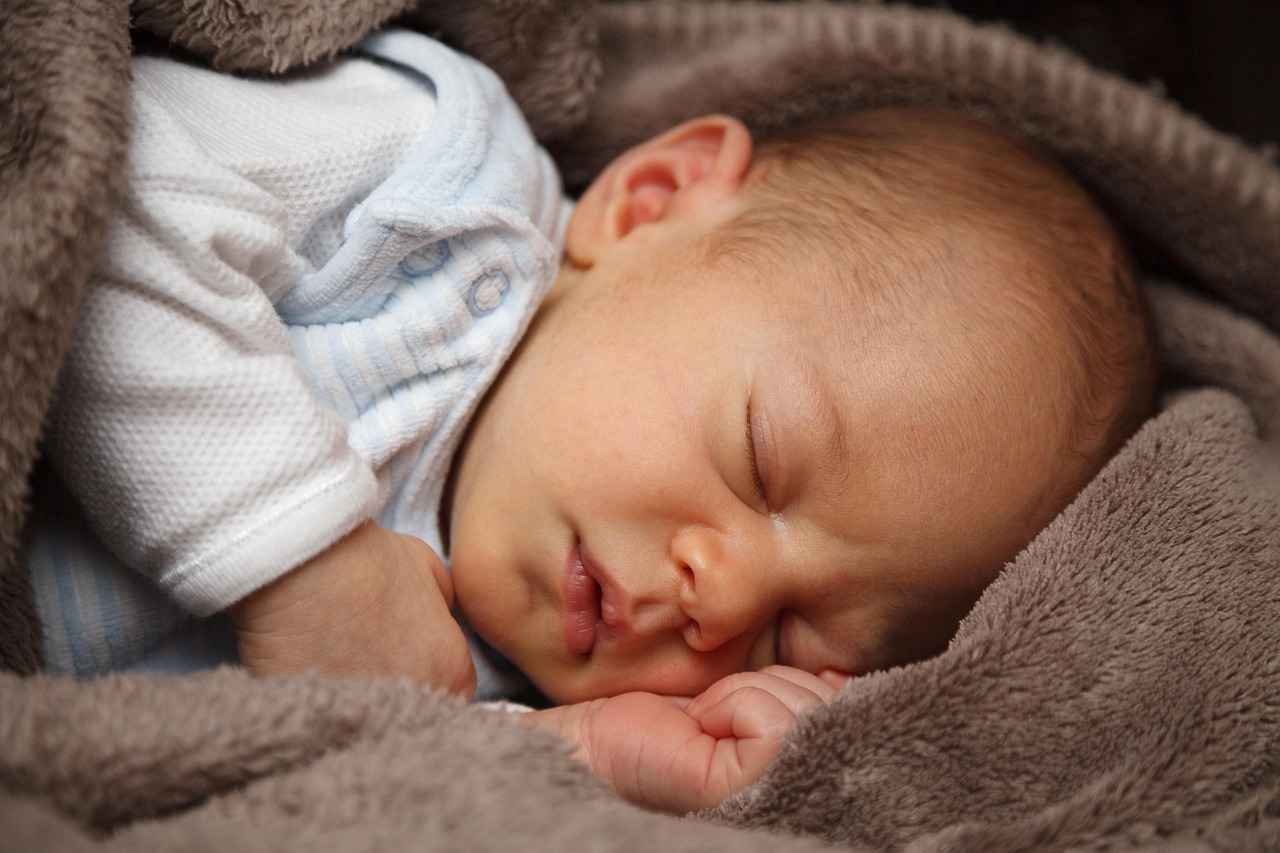
Choosing the Right Mattress for Your Baby Bed
When it comes to ensuring your baby’s restful sleep, choosing the right mattress is paramount. A quality mattress not only enhances sleep quality but also promotes overall health and safety for your little one. This section delves into the various types of mattresses available, along with essential tips for selecting the best one for your baby’s bed.
Understanding the different types of baby mattresses is crucial for making an informed choice. Here are the most common options:
- Foam Mattresses: Lightweight and often less expensive, foam mattresses provide decent support and comfort. They are typically made from high-density foam, which helps in maintaining shape over time.
- Innerspring Mattresses: Featuring a coil system, innerspring mattresses offer excellent support and durability. They are often recommended for their breathability and firmness.
- Organic Mattresses: Made from natural materials, organic mattresses are a popular choice for eco-conscious parents. They are free from harmful chemicals and provide a safe sleeping environment.
- Hybrid Mattresses: Combining foam and innerspring elements, hybrid mattresses offer the best of both worlds, providing comfort and support.
When selecting a mattress for your baby, consider the following factors:
- Firmness: A firm mattress is essential for infants to reduce the risk of suffocation and Sudden Infant Death Syndrome (SIDS). It should be hard enough to support your baby’s body while still being comfortable.
- Size: Ensure the mattress fits snugly in the crib without any gaps. This is vital for safety, as gaps can pose a risk for entrapment.
- Material: Choose materials that are hypoallergenic and free from toxic chemicals. Look for certifications like CertiPUR-US or GREENGUARD Gold to ensure safety.
- Washability: Opt for a mattress with a removable, washable cover. This makes it easier to maintain hygiene and cleanliness.
Keeping your baby’s mattress safe and well-maintained is essential. Here are some practical tips:
- Regular Cleaning: Clean the mattress regularly by vacuuming and spot cleaning with mild soap and water. Avoid harsh chemicals that can be harmful to your baby.
- Check for Wear and Tear: Periodically inspect the mattress for any signs of damage or wear. A worn-out mattress can compromise safety and comfort.
- Air it Out: Allow the mattress to air out in a well-ventilated area to prevent any buildup of moisture or odors.
- Replace When Necessary: If the mattress shows signs of sagging or is over five years old, consider replacing it to ensure your baby’s comfort and safety.
In conclusion, selecting the right mattress for your baby’s bed is a critical decision that impacts their sleep quality and overall health. By understanding the different types of mattresses available and considering essential factors such as firmness, size, and materials, you can make a well-informed choice. Prioritizing safety and maintenance will further enhance your baby’s sleeping environment, ensuring they have a cozy and secure place to rest.
Types of Baby Mattresses Available
When it comes to ensuring your baby’s comfort and safety during sleep, choosing the right mattress is of utmost importance. With numerous options available, understanding the different types of baby mattresses can help you make an informed decision. This section delves into the three main types of baby mattresses: foam, innerspring, and organic options, each offering unique benefits and features.
Foam mattresses are a popular choice among parents due to their lightweight nature and affordability. Made from high-density polyurethane foam, these mattresses provide a firm sleeping surface, which is essential for infants. The firmness helps reduce the risk of suffocation and supports proper spinal alignment.
- Lightweight: Easy to change sheets and move around.
- Cost-effective: Generally more affordable than other types.
- Variety: Available in various thicknesses and firmness levels.
However, it is crucial to choose a high-quality foam mattress that is free from harmful chemicals. Look for certifications such as CertiPUR-US, which ensures that the foam meets safety and environmental standards.
Innerspring mattresses consist of a support core made from steel coils, providing excellent support and durability. These mattresses are often favored for their breathability and ability to distribute weight evenly, making them a comfortable choice for growing babies.
- Supportive: Offers good support for infants and toddlers.
- Durable: Typically lasts longer than foam options.
- Breathable: Enhanced airflow helps regulate temperature.
While innerspring mattresses can be heavier and more expensive, they often come with dual-sided options, allowing you to flip the mattress as your child grows, providing different levels of firmness for various stages of development.
Organic mattresses are made from natural materials such as cotton, wool, and latex, free from synthetic chemicals and pesticides. These mattresses are an excellent choice for parents seeking a more eco-friendly and safe sleeping environment for their baby.
- Non-toxic: Made without harmful chemicals, promoting health.
- Sustainable: Often made from renewable resources.
- Breathable: Natural materials provide good airflow.
Although organic mattresses can be on the pricier side, the peace of mind they offer regarding safety and environmental impact can be worth the investment. Look for certifications such as GOTS (Global Organic Textile Standard) to ensure the product meets organic standards.
In summary, understanding the various types of baby mattresses—foam, innerspring, and organic—is essential for making a well-informed choice. Each type has its advantages, and the right option will depend on your baby’s specific needs, your budget, and your values regarding health and environmental impact. By considering these factors, you can create a safe and comfortable sleeping environment for your little one.
Mattress Safety and Maintenance Tips
Ensuring your baby’s mattress is safe and well-maintained is vital for their health and well-being. A clean and secure sleeping environment can significantly impact your baby’s sleep quality and overall comfort. Here, we share practical tips for cleaning and maintaining your baby’s mattress, along with essential safety considerations.
Before diving into maintenance tips, it’s crucial to understand the importance of safety standards for baby mattresses. Always look for mattresses that meet safety certifications such as GREENGUARD Gold or CertiPUR-US. These certifications ensure that the materials used are free from harmful chemicals and safe for your baby.
- Vacuuming: Use a handheld vacuum to remove dust, allergens, and debris from the mattress surface. This should be done at least once a month.
- Spot Cleaning: For stains, use a mild detergent mixed with water. Dampen a cloth and gently blot the stained area, avoiding soaking the mattress.
- Deep Cleaning: Every few months, consider deep cleaning the mattress. Remove the cover (if removable) and wash it according to the manufacturer’s instructions.
To keep your baby’s mattress hygienic, consider the following tips:
- Use a Waterproof Mattress Protector: This protects against spills and accidents, making cleaning easier and preventing moisture buildup.
- Air Out the Mattress: Regularly air out the mattress by placing it outside on a dry, sunny day. This helps eliminate odors and moisture.
- Rotate the Mattress: To ensure even wear, rotate the mattress every few months. This helps maintain its shape and comfort.
Even with proper maintenance, mattresses have a lifespan. Here are some signs that it might be time to replace your baby’s mattress:
- Visible Wear and Tear: Check for sagging, lumps, or tears in the fabric.
- Odors: If the mattress retains unpleasant odors even after cleaning, it may be time for a replacement.
- Allergic Reactions: If your baby shows signs of allergies, it could indicate that the mattress is harboring allergens.
When selecting a mattress for your baby, consider the following:
- Firmness: A firm mattress is essential for safe sleep, as it reduces the risk of suffocation and promotes healthy spine development.
- Material: Look for hypoallergenic materials, such as organic cotton or natural latex, to minimize exposure to harmful substances.
- Size: Ensure the mattress fits snugly in the crib or bassinet, leaving no gaps where your baby could become trapped.
By following these mattress safety and maintenance tips, you can create a secure and comfortable sleeping environment for your baby. Regular cleaning, proper care, and timely replacements will ensure that your baby’s mattress remains a safe haven for restful sleep.
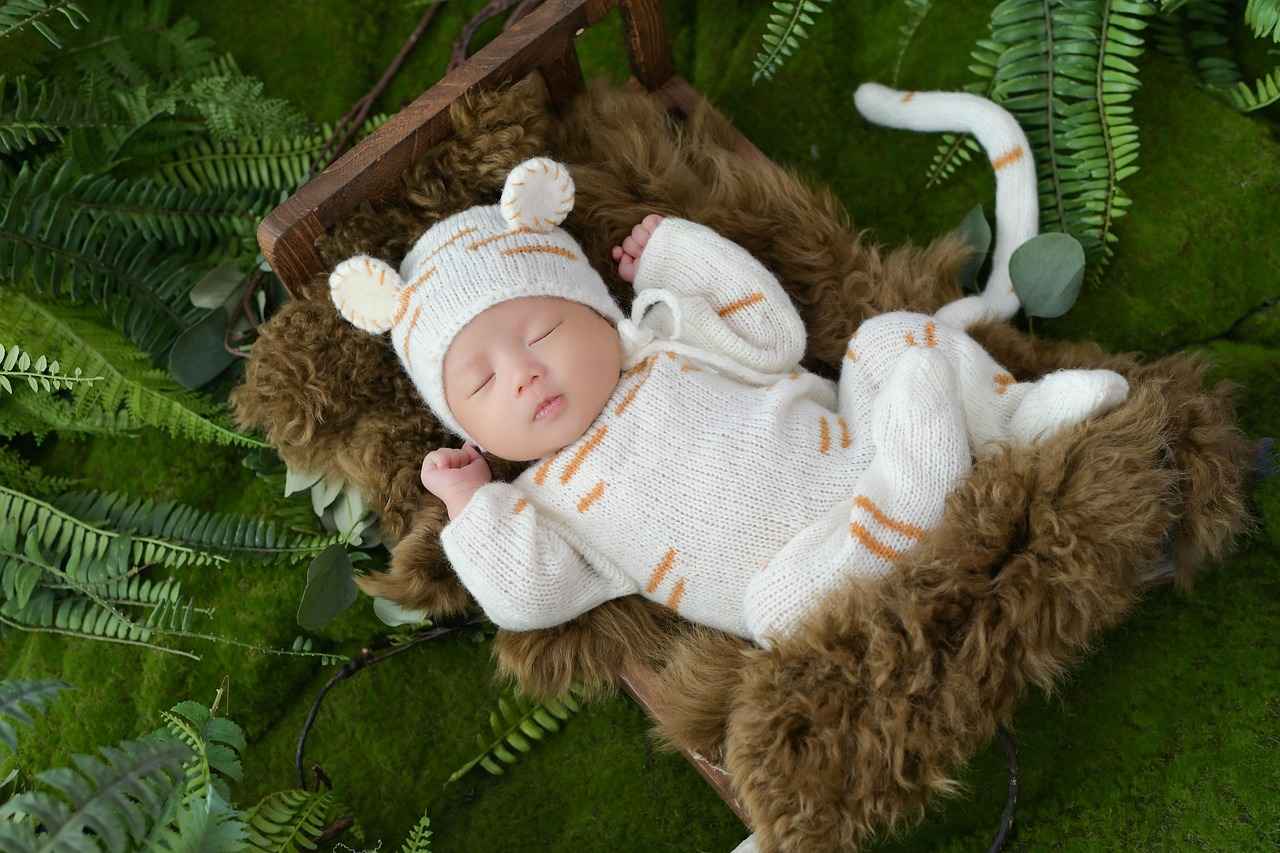
Incorporating Color and Patterns in Nursery Design
Color and patterns are not just aesthetic choices; they play a crucial role in creating a nurturing environment for your baby. The right combination can transform a simple nursery into a vibrant and cozy haven. This section delves into effective strategies for integrating playful colors and engaging patterns into your baby’s bed design, ensuring a delightful atmosphere.
Choosing Soothing Colors for Sleep
When selecting colors for your nursery, it is essential to consider their psychological effects. Soothing colors such as soft blues, gentle greens, and muted pastels can promote relaxation and tranquility, which are vital for your baby’s sleep. Research indicates that these colors can create a calming ambiance, making it easier for babies to drift into peaceful slumber.
- Soft Blues: Known for its calming effects, blue can help lower heart rates and promote serenity.
- Gentle Greens: This color symbolizes nature and can bring a sense of balance and harmony.
- Muted Pastels: Soft pinks and yellows can add warmth without overwhelming the senses.
Incorporating these colors into your baby’s bed design can be achieved through bedding, curtains, and even wall colors. For instance, a light blue crib sheet paired with a soft green blanket can create a visually appealing and calming effect.
Fun Patterns to Stimulate Baby’s Senses
Patterns can be a wonderful way to engage your baby’s visual senses. Choosing playful patterns can stimulate curiosity and promote visual development. However, it’s essential to maintain a balance to avoid overwhelming the space.
| Pattern Type | Description | Examples |
|---|---|---|
| Geometric Patterns | Simple shapes and lines that are visually engaging. | Chevron, Polka Dots |
| Animal Prints | Fun and whimsical designs featuring animals. | Safari Animals, Farm Animals |
| Floral Patterns | Soft and gentle designs that add a touch of nature. | Baby Blooms, Leafy Designs |
Incorporating these patterns into your nursery can be done through bedding sets, wall decals, or even rugs. For example, a crib adorned with a geometric-patterned quilt can create a focal point while remaining stylish and inviting.
Maintaining Cohesion in Design
While it’s essential to have fun with colors and patterns, maintaining a cohesive design is equally important. Choose a color palette that complements the patterns you select. For instance, if you opt for a vibrant animal print, consider using a more subdued color for the walls or larger furniture pieces to balance the overall look.
Additionally, consider the scale of the patterns. Larger patterns can dominate a small space, while smaller patterns can create a more harmonious feel. Mixing different patterns can also work, but it’s crucial to ensure they share a common color scheme to maintain visual unity.
In conclusion, incorporating color and patterns into your nursery design is an exciting opportunity to create a cozy and stimulating environment for your baby. By thoughtfully selecting soothing colors and engaging patterns, you can design a nursery that is not only beautiful but also promotes a sense of comfort and security for your little one.
Choosing Soothing Colors for Sleep
Creating a serene nursery environment is essential for promoting relaxation and sleep in babies. One effective way to achieve this is through the strategic use of color. Color psychology suggests that certain colors can evoke specific emotional responses, making them powerful tools in nursery design.
When choosing colors for a baby’s room, it is important to consider hues that are known to be calming. Soft pastels, such as light blues, gentle greens, and muted pinks, are often recommended. These colors not only create a peaceful atmosphere but also help in reducing overstimulation, which can be particularly beneficial during sleep times.
Additionally, neutral colors like beige, soft gray, and creamy whites can serve as a perfect backdrop for a nursery. They provide a soothing canvas that can be enhanced with colorful accents, such as bedding or wall art, without overwhelming the senses. The key is to maintain a balance between soothing tones and playful elements that stimulate the baby’s developing senses.
Here are some suggested color palettes that can help create a calming nursery environment:
- Ocean Breeze: Soft blues and whites create a tranquil coastal vibe.
- Garden Fresh: Gentle greens paired with light yellows evoke a refreshing, nature-inspired feel.
- Sunset Glow: Warm peach and soft lavender can create a cozy, inviting atmosphere.
- Classic Neutrals: Shades of beige and soft gray provide a timeless, elegant look.
Moreover, incorporating textured elements can enhance the soothing qualities of the colors chosen. For example, soft fabrics in these colors can add warmth and comfort, while wall decals or artwork in complementary hues can provide visual interest without being too stimulating.
It is also important to consider the lighting in the nursery. Natural light can change the appearance of colors throughout the day, making them look different in various lighting conditions. Soft, warm lighting in the evening can enhance the calming effects of the chosen color palette, promoting a restful environment conducive to sleep.
In summary, selecting soothing colors for a nursery is a vital step in creating a peaceful space for babies. By understanding the impact of color psychology and carefully choosing palettes that promote relaxation, parents can foster an environment that supports healthy sleep habits. Remember, the nursery should be a sanctuary where both baby and parents feel calm and secure, laying the foundation for a nurturing upbringing.
Fun Patterns to Stimulate Baby’s Senses
In the early stages of life, a baby’s visual development is crucial. Patterns can play a significant role in stimulating a baby’s visual senses, providing both entertainment and learning opportunities. By incorporating playful and engaging patterns into your nursery design, you can create a vibrant environment that captures your baby’s attention and encourages exploration.
When selecting patterns, it’s essential to consider their contrast and complexity. Babies are naturally drawn to high-contrast designs, especially in the first few months of life. Black-and-white patterns, for instance, are ideal as they help enhance visual acuity. As babies grow, they begin to appreciate more complex patterns, which can aid in cognitive development. Here are some tips for incorporating fun patterns into your nursery:
- Bedding Choices: Start with the bedding. Choose crib sheets and blankets adorned with fun patterns such as stars, animals, or geometric shapes. These designs not only add a pop of color but also provide a cozy atmosphere for your baby.
- Wall Decor: Wall decals or wallpaper featuring whimsical patterns can transform the nursery into a playful haven. Consider using removable wall stickers that showcase nature scenes or playful characters, allowing for easy updates as your baby grows.
- Rugs and Textiles: Incorporate patterned rugs or cushions to create a soft play area. Look for rugs with bold colors and designs that encourage tummy time and crawling, enhancing sensory exploration.
- Art and Accessories: Select art pieces that feature vibrant patterns and colors. Hang framed prints or canvases that depict animals, shapes, or abstract designs to create visual interest.
While integrating patterns, it’s vital to maintain a cohesive design. Choose a color palette that complements the patterns you select. For instance, if your bedding has a bright color scheme, consider using softer tones for wall colors to balance the overall look. This approach creates a harmonious environment that is visually stimulating without being overwhelming.
Additionally, consider the functionality of the patterns you choose. Opt for materials that are easy to clean and maintain, as babies can be messy! Fabrics that are machine washable will save you time and effort, ensuring that your nursery remains a clean and welcoming space.
Incorporating fun patterns into your baby’s nursery not only enhances the aesthetic appeal but also promotes sensory engagement. By thoughtfully selecting designs that stimulate your baby’s visual senses, you create an environment that supports their growth and development. Remember, a well-decorated nursery can be both beautiful and functional, providing a cozy space for your little one to thrive.
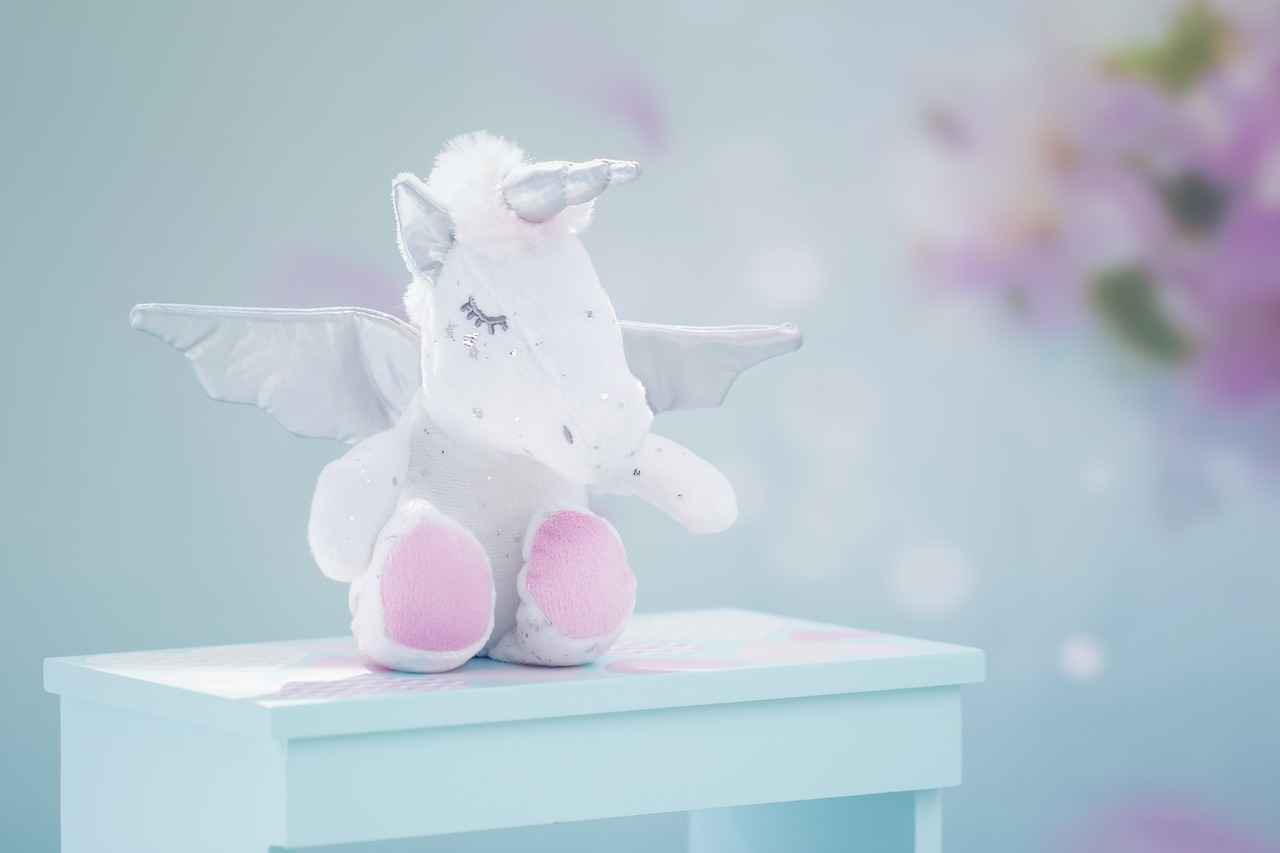
Eco-Friendly Baby Bed Options
Sustainability has become a crucial aspect of nursery design, particularly when it comes to selecting baby beds. As parents become more conscious of their environmental impact, the demand for eco-friendly baby bed options has surged. This section delves into various sustainable choices, focusing on materials and manufacturing processes that prioritize the health of our planet while ensuring the safety and comfort of our little ones.
When considering eco-friendly baby beds, the materials used are of utmost importance. Here are some sustainable materials to look for:
- Bamboo: Known for its rapid growth and renewability, bamboo is a popular choice for baby beds. It is naturally hypoallergenic and resistant to mold and bacteria.
- Reclaimed Wood: Utilizing reclaimed wood not only reduces waste but also adds a unique character to the nursery. It’s essential to ensure that the wood is free from harmful chemicals and finishes.
- Organic Cotton: For mattresses and bedding, organic cotton is a safe choice. It is grown without pesticides and is softer than conventional cotton, providing a comfortable sleeping surface for babies.
- Non-toxic Finishes: Look for baby beds that use non-toxic paints and finishes. These products are free from harmful VOCs (volatile organic compounds) that can affect indoor air quality.
In addition to materials, the manufacturing processes of baby beds play a significant role in their eco-friendliness. Consider the following:
- Ethical Sourcing: Choose brands that prioritize ethical sourcing of materials, ensuring that their suppliers adhere to sustainable practices.
- Energy-Efficient Production: Manufacturers that utilize energy-efficient practices minimize their carbon footprint. Look for companies that use renewable energy sources in their production facilities.
- Local Production: Supporting local manufacturers reduces transportation emissions and supports the local economy. This practice also allows for greater transparency in the production process.
Selecting eco-friendly baby bed options offers numerous advantages:
- Healthier Environment: Eco-friendly materials and finishes contribute to better indoor air quality, creating a safer environment for your baby.
- Durability: Sustainable materials often provide greater durability, ensuring that the baby bed lasts longer and can be passed down to future generations.
- Peace of Mind: Knowing that you are making a responsible choice for the planet can provide parents with a sense of satisfaction and peace of mind.
There are various eco-friendly baby bed designs available that cater to different styles and preferences:
- Convertible Cribs: These versatile beds grow with your child, transforming from a crib to a toddler bed. Many brands offer eco-friendly options that use sustainable materials.
- Minimalist Designs: Simple, clean lines are not only aesthetically pleasing but often use fewer materials, making them more sustainable.
- Bassinets Made from Natural Materials: Many modern bassinets are crafted from natural materials like wicker or organic fabrics, providing a cozy and eco-friendly sleeping space for newborns.
In conclusion, choosing eco-friendly baby bed options is a significant step toward creating a sustainable nursery. By selecting beds made from sustainable materials and supporting manufacturers that prioritize ethical practices, parents can ensure a healthier environment for their babies while contributing positively to the planet.
Materials to Look For in Eco-Friendly Beds
When it comes to creating a nursery that is both beautiful and environmentally friendly, understanding the materials used in eco-friendly baby beds is essential. Parents are increasingly seeking sustainable options that ensure the safety of their little ones while also being kind to the planet. This section will highlight some of the most popular sustainable materials that are not only safe for your baby but also contribute positively to the environment.
- Bamboo: This rapidly renewable resource is known for its strength and durability. Bamboo baby beds are lightweight yet sturdy, and the natural properties of bamboo make it resistant to bacteria and allergens, providing a safe sleeping environment for your baby.
- Organic Cotton: Unlike conventional cotton, organic cotton is grown without harmful pesticides or chemicals. It is soft, breathable, and hypoallergenic, making it an excellent choice for baby bedding. Look for certifications like GOTS (Global Organic Textile Standard) to ensure the product’s authenticity.
- Reclaimed Wood: Using reclaimed wood for baby beds is a sustainable choice that reduces the demand for new lumber. This not only helps in conserving forests but also adds a unique character to the nursery. Ensure that the wood is free from toxic finishes and treatments.
- Natural Latex: Derived from rubber trees, natural latex is biodegradable and provides excellent support and comfort. It is also resistant to dust mites and mold, making it a healthy option for your baby’s mattress.
- Non-Toxic Finishes: When selecting an eco-friendly baby bed, it’s crucial to consider the finishes used. Look for beds that are finished with non-toxic paints or stains, which are free from volatile organic compounds (VOCs) that can harm indoor air quality.
Furthermore, many manufacturers are adopting sustainable practices in their production processes. This includes utilizing energy-efficient methods and reducing waste. By choosing eco-friendly baby beds made from these materials, parents can rest assured that they are making a responsible choice for their child’s health and the environment.
In addition to the materials, it’s important to consider the overall design and functionality of the baby bed. Many eco-friendly options are designed to be convertible, allowing them to grow with your child. This not only maximizes the lifespan of the bed but also minimizes waste, as it reduces the need for multiple purchases over the years.
Ultimately, selecting an eco-friendly baby bed is about making informed choices that prioritize both your baby’s safety and the health of the planet. By opting for sustainable materials and practices, you can create a nurturing and environmentally responsible nursery that supports your child’s development.
Benefits of Choosing Eco-Friendly Designs
In today’s world, making sustainable choices is more important than ever, especially when it comes to creating a nursery for your baby. Choosing eco-friendly designs not only benefits the environment but also promotes a healthier living space for your little one. This section delves into the long-term advantages of sustainable nursery choices, highlighting how they contribute to both your child’s well-being and the planet’s health.
- Healthier Indoor Air Quality: Eco-friendly materials are often free from harmful chemicals and toxins commonly found in traditional furnishings. This means that your baby will be breathing cleaner air, which is crucial for their developing lungs and overall health.
- Durability and Longevity: Many eco-friendly products are designed to last longer than their conventional counterparts. By investing in sustainable nursery items, you’re not only reducing waste but also ensuring that your baby’s bed and other furniture can withstand the test of time.
- Natural Aesthetics: Eco-friendly designs often feature natural materials like wood, organic cotton, and non-toxic finishes. These elements not only create a beautiful and calming environment but also help foster a connection to nature, which can be beneficial for a child’s emotional development.
- Sustainable Manufacturing Processes: Many companies that produce eco-friendly nursery items prioritize sustainable practices, such as using renewable resources and minimizing waste during production. By choosing these products, you’re supporting businesses that care about the environment.
- Encouraging Eco-Conscious Habits: By surrounding your baby with eco-friendly designs, you instill values of sustainability and environmental responsibility from an early age. This can lead to a greater awareness of these issues as they grow older.
Moreover, eco-friendly nursery choices often come with certifications that guarantee their sustainability. Look for labels such as GREENGUARD or OEKO-TEX, which indicate that products have been tested for harmful substances and meet strict environmental standards.
In addition to the immediate benefits, choosing sustainable nursery items can have a positive impact on future generations. By reducing our carbon footprint and promoting responsible consumption, we contribute to a healthier planet for our children and their children.
Ultimately, the benefits of choosing eco-friendly designs extend far beyond aesthetics. They encompass health, safety, and a commitment to sustainability that can shape a better future. When creating your baby’s nursery, consider the long-term advantages of opting for eco-friendly options. Your choices today will resonate for years to come, ensuring that your little one grows up in a safe, beautiful, and environmentally responsible environment.
Frequently Asked Questions
- What type of baby bed is best for a newborn?
For newborns, a crib is typically the best option. It’s designed to provide a safe sleeping environment with proper support. Look for cribs that meet safety standards and have adjustable mattress heights.
- Are convertible cribs worth the investment?
Absolutely! Convertible cribs can transition from a crib to a toddler bed, making them a long-term investment. They save money in the long run and adapt to your child’s changing needs.
- How do I choose the right mattress for my baby?
Choosing the right mattress involves considering firmness and material. A firm, flat mattress is essential for safety. Options include foam, innerspring, and organic mattresses, each with its own benefits.
- What colors are best for a nursery?
Soothing colors like soft blues, greens, and pastels are ideal as they promote relaxation. Consider using these shades on walls and bedding to create a calming atmosphere for your baby.
- Are eco-friendly baby beds safe?
Yes! Eco-friendly baby beds are made from sustainable materials that are safe for your baby and the environment. Look for certifications to ensure they meet safety standards.
